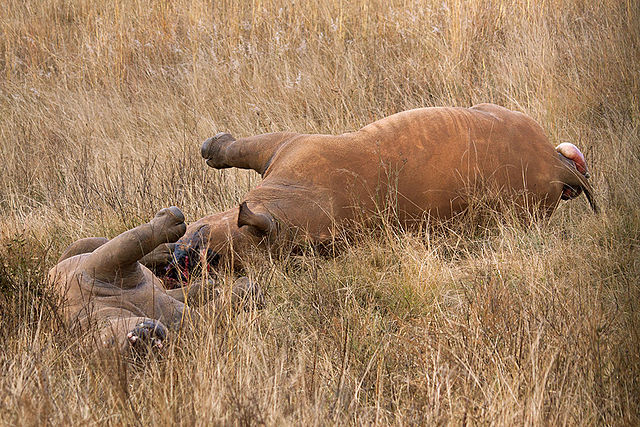The findings of the Wildlife Justice Commission’s (WJC) report published on Thursday show a dire situation for rhinoceroses, one of the world’s last forms of megafauna.
“Rhino horn trafficking remains a severe problem that needs to be addressed with a new sense of urgency as transnational organized crime,” the Wildlife Justice Commission said. “Over the past 10 years, the illegal killing of rhinos and trafficking of their horns has grown as a global criminal enterprise, comprising multiple criminal components dominated by greed and the pursuit of substantial profits.”
The WJC found that over 7.5 tonnes of illegal rhino horn had been seized by police and customs authorities around the world over the past decade. Three countries have emerged as major players in the global illegal trade.
South Africa, where the majority of the world’s rhino population lives and is poached, Malaysia, where the illicit goods transit through and Vietnam, where wildlife traffickers and dealers then sell the parts on to buyers from other parts of Asia, such as China.
Half of all the seized horns over the past ten years originated in South Africa and a quarter of them were linked to Vietnam, the WJC found. In Vietnam, there were even prominent physical marketplaces for the horns, such as Nhi Khe village near Hanoi which operated between 2012 and 2016.
“Wildlife Justice Commission investigations found the market supplied an almost entirely Chinese clientele with carved rhino horn products, with prices quoted in RMB, interpreters playing a pivotal role in connecting Chinese buyers with Vietnamese traders and facilitating negotiations, and payments made to Chinese bank accounts,” the report said.
Particularly concerning is just how brazen the trade seems to be. Despite rhino’s being a CITES protected species, poachers are rarely prosecuted and the horns are often smuggled on commercial airlines.
“Analysis of concealment methods described in seizure reports found that rhino horn is most often smuggled with no concealment at all. This is a notable point of difference from other wildlife products with a similar Africa to Asia supply chain, such as elephant ivory and pangolin scales, which are almost always hidden within a cover load of legal commodities,” the WJC said.
“It is also a departure from the broader norm, as organized crime groups of any type usually invest a lot of effort in concealing their illicit activities in order to maximize their operational potential. This could indicate that traffickers are more reliant on corrupt elements to move rhino horn shipments through the supply chain, rendering it unnecessary to disguise the products,” it explained.
Poaching isn’t the only source of horns either. Around a third of horns that ended up on the international market had been diverted or stolen from legal stockpiles, either those of private rhino breeders or government agencies, which suggests the significant involvement of corruption in the illegal trade.
Shipments are getting larger as well. The WJC found that the average weight of a shipment more than doubled by 2021, rising to over 44 kilos.
“The ongoing and dynamic nature of the threat to rhinos is clear and this situation continues to be compounded by uncoordinated and fragmented law enforcement action along the supply chain,” the WJC said.
The Commission urged all jurisdictions to step up and redirect their efforts to ensure crime is confronted in an effective, coordinated, and enduring manner.
“Law enforcement on its own will not stop the poaching of rhinos or the trafficking of horns, but the full weight of law enforcement has not yet been applied to this issue,” it added. “With 9,561 rhinos poached across Africa and 7.5 tonnes of rhino horns seized from illegal trade globally during the past 10 years, the scale of the rhino crisis has now likely eclipsed anything that was envisaged in 2012.”

